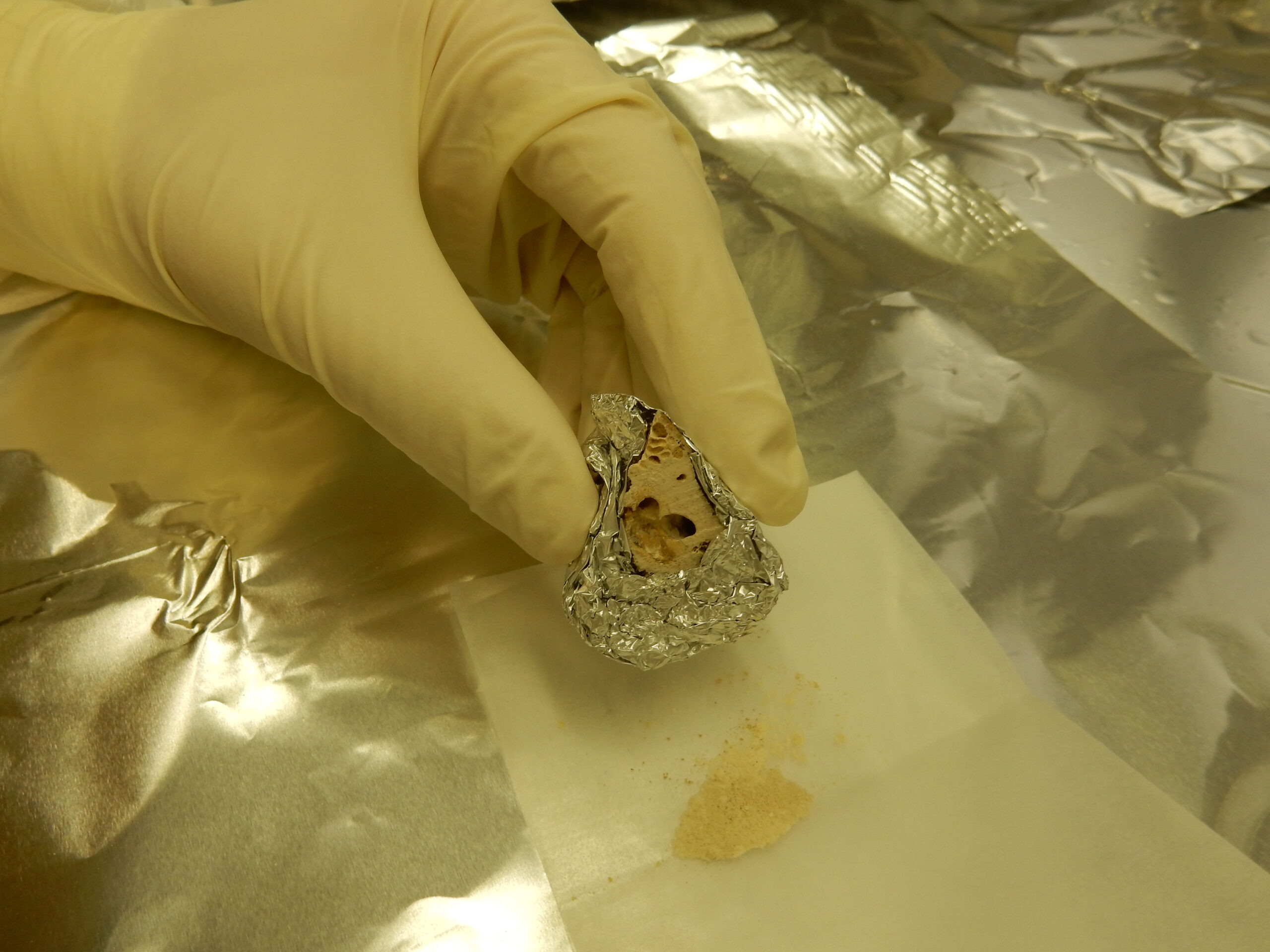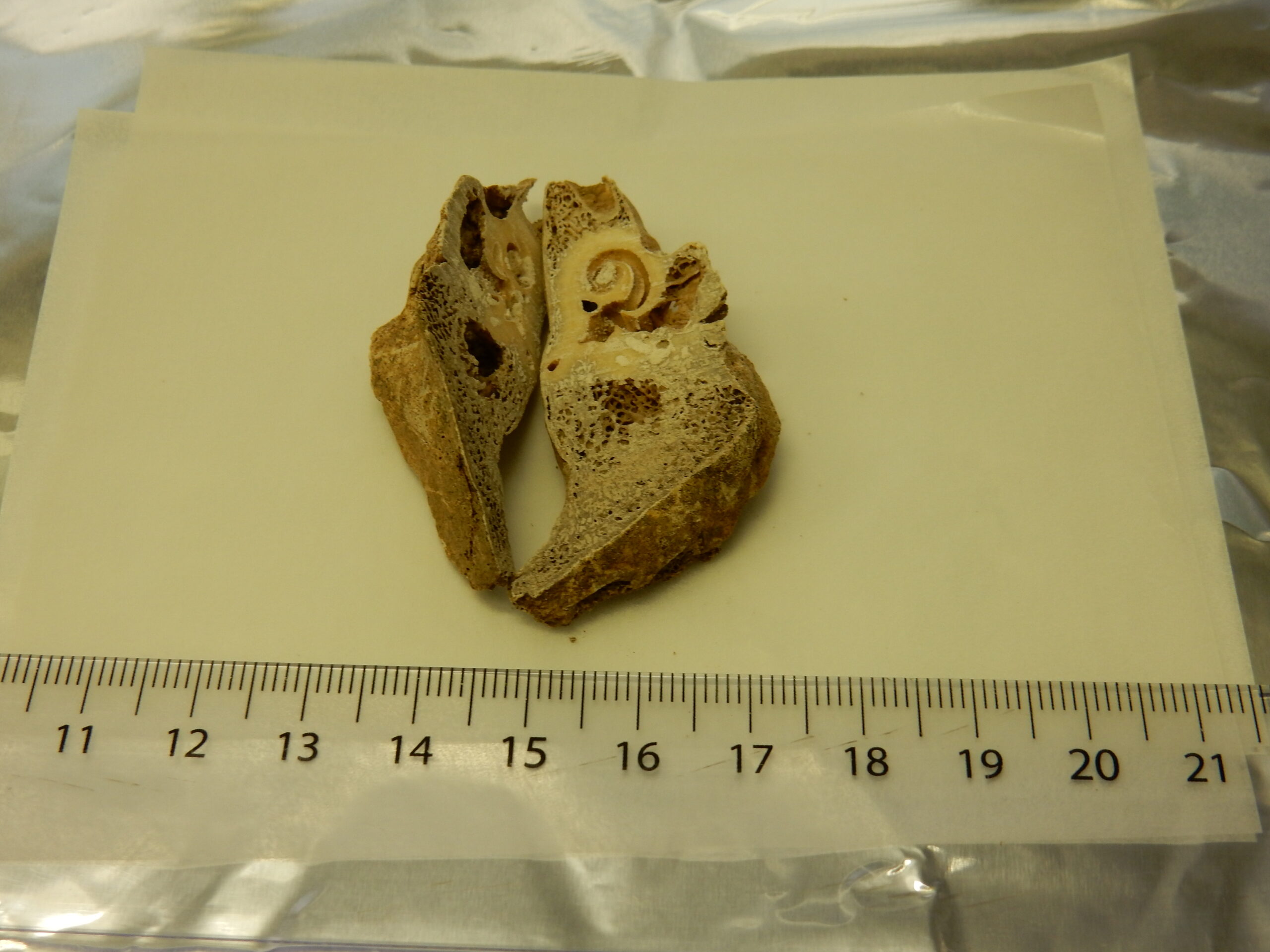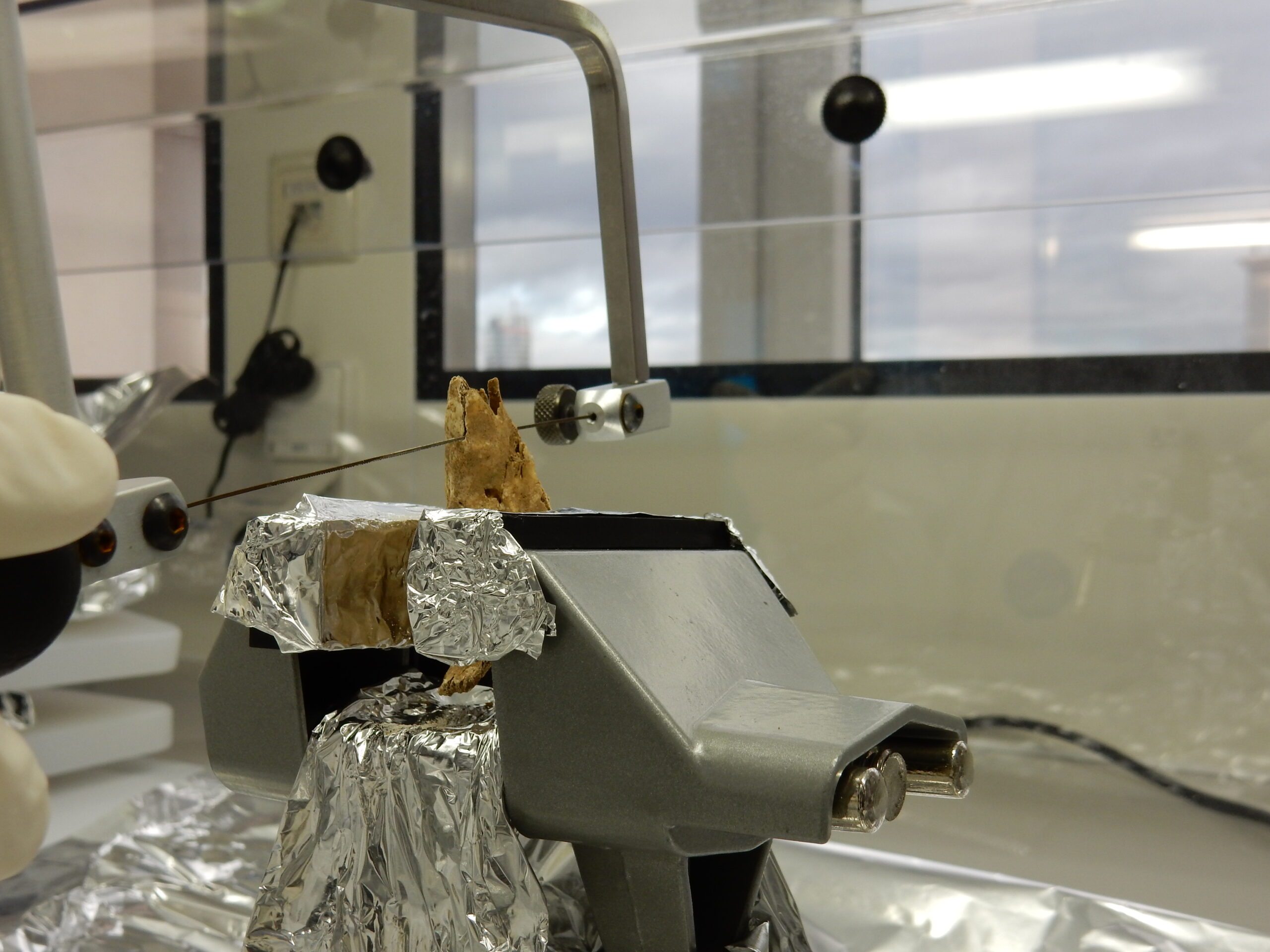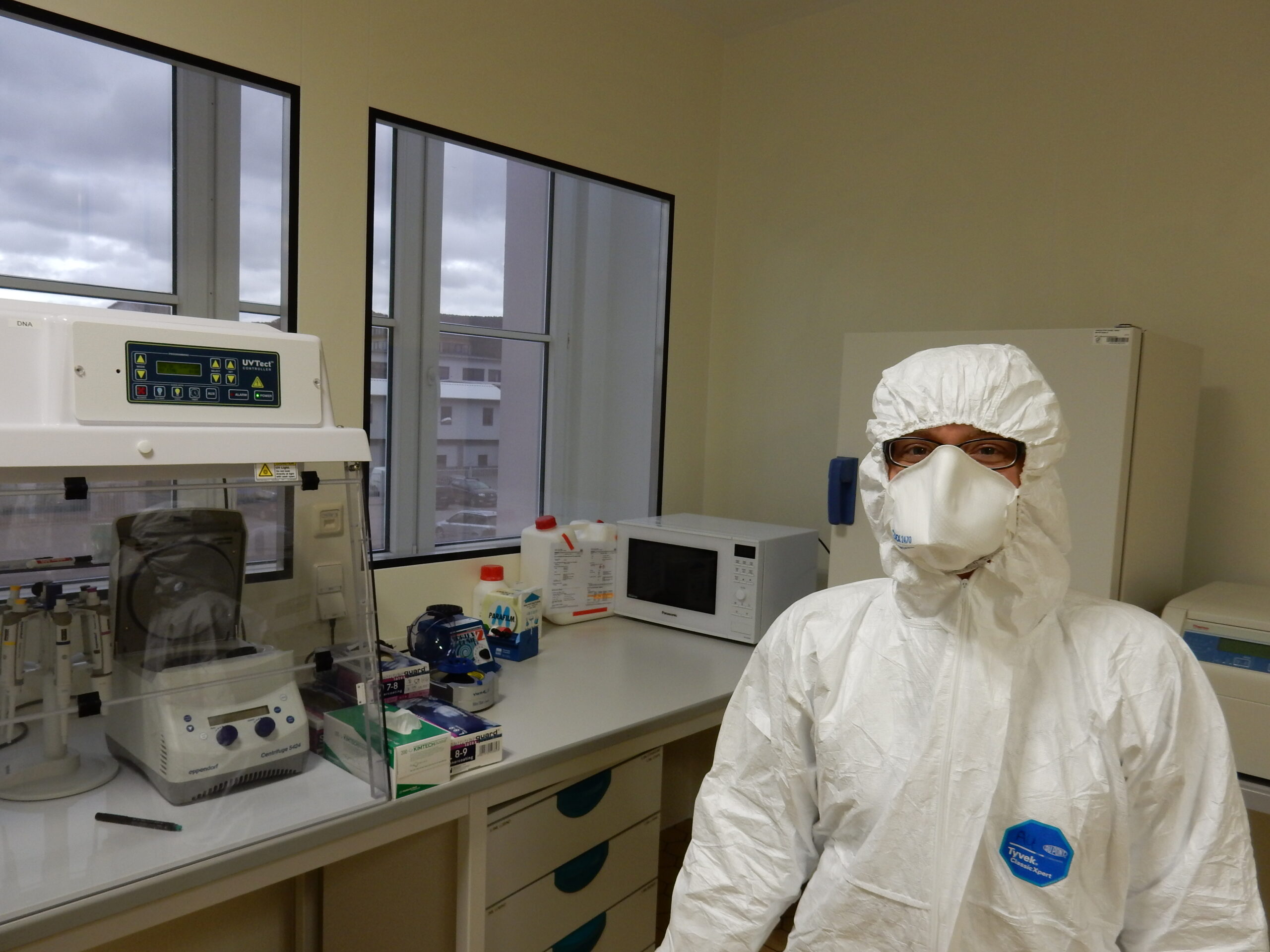
The bony labyrinth sits within the extremely hard petrous portion of the temporal bone of the skull. The empty cavity houses the membranous labyrinth during life. The labyrinth canals are responsible for keeping head movements steady during locomotion and balance. The cochlea is responsible for hearing. The morphology of the bony labyrinth is species-specific. Dr. Uhl has researched bony labyrinth morphology in modern humans and fossils such as Neanderthals and early human specimen Cioclovina. In modern humans her work reveals sexual dimorphism as well as population differences in modern humans. Bony labyrinth pathologies and ontogeny of the labyrinth are also key research focuses in the Uhl lab. DNA preserved in the bony labyrinth is very valuable, see photos of Dr. Uhl teaching a workshop at the Max Planck Institute on how to sample Petrous Bones for DNA below.








